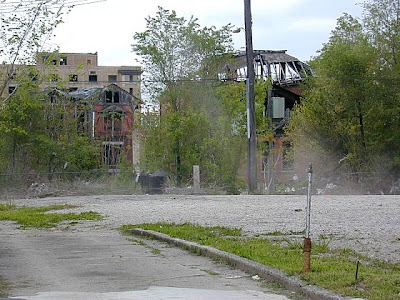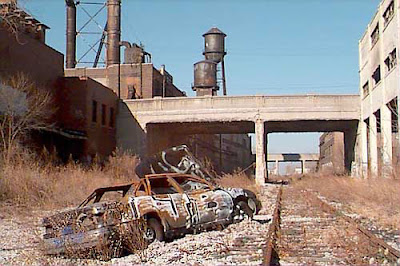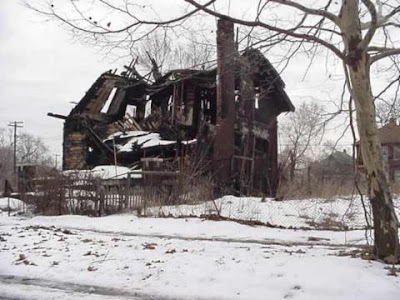
But while that picture does portray a beautiful downtown (and it has its moments when it is gorgeous) what is below is also a very accurate assessment of what Detroit has to offer.



Worst Places
America's Most Miserable Cities
Kurt Badenhausen 01.30.08, 6:00 AM ET
In Pictures: America's Most Miserable Cities
Imagine living in a city with the country's highest rate for violent crime and the second-highest unemployment rate. As an added kicker you need more Superfund dollars allocated to your city to clean up contaminated toxic waste sites than just about any other metro.
Unfortunately, this nightmare is a reality for the residents of Detroit. The Motor City grabs the top spot on Forbes' inaugural list of America's Most Miserable Cities.
In Pictures: America's Most Miserable Cities
Misery is defined as a state of great unhappiness and emotional distress. The economic indicator most often used to measure misery is the Misery Index. The index, created by economist Arthur Okun, adds the unemployment rate to the inflation rate. It has been in the narrow 7-to-9 range for most of the past decade, but was over 20 during the late 1970s.
There also exists a Misery Score, which is the sum of corporate, personal, employer and sales taxes in different countries. France took the top spot (or perhaps bottom is more appropriate) with a score of 166.8, thanks to a top rate of 51% on personal incomes and 45% for employer Social Security.
But aren't there other things that cause Americans misery? Of course. So we decided to expand on the Misery Index and the Misery Score to create our very own Forbes Misery Measure. We're sticking with unemployment and personal tax rates, but we are adding four more factors that can make people miserable: commute times, weather, crime and that toxic waste dump in your backyard.
We looked at only the 150 largest metropolitan areas, which meant a minimum population of 371,000. We ranked the cities on the six criteria above and added their ranks together to establish what we call the Misery Measure. The data used in the rankings came from Portland, Ore., researcher Bert Sperling, who last year published the second edition of Cities Ranked & Rated along with Peter Sander. Economic research firm Economy.com, which is owned by Moody's, also supplied some data.
Detroit in the top spot, with its sister city Flint ranked third, is probably not a great shock. "If Detroit were a baseball team, we'd say they are mired in a slump," says Sperling. Both Detroit and Flint have suffered tremendously from the auto industry downturn. Flint's plight was immortalized in the Michael Moore movie Roger & Me, which chronicles Moore's attempts to meet with then General Motors (nyse: GM - news - people ) Chief Executive Roger Smith.
Crime and unemployment are closely linked, according to Sperling. Our three most miserable places bear that out (Stockton, Calif., ranks second). All three are among the eight worst cities in terms of both unemployment and violent crime.
The United States' two biggest cities both induce a ton of misery. New York was the fourth most miserable city by our count, while Los Angeles clocked in at sixth. The Big Apple has the longest commute times (36.2 minutes) and the highest tax rates (10.5%) in the country. As the financial capital of the world and home to write-down kings Merrill Lynch (nyse: MER - news - people ) and Citigroup (nyse: C - news - people ), New York appears poised for more misery in 2008.
The people of La-La Land have some of the best weather in the U.S. (it's ranked seventh) but scored poorly when it came to commute times, Superfund sites and taxes. And we did not even factor in air quality, where Los Angeles is the worst in the nation by far, according to Sperling.
The biggest surprise on our list is Charlotte, N.C., which is ranked ninth. Charlotte has undergone tremendous economic growth the past decade, while the population has soared 32%. But the current picture isn't as bright. Employment growth has not kept up with population growth, meaning unemployment rates are up more than 50% compared with 10 years ago. Charlotte scored in the bottom half of all six categories we examined. It scored the worst on violent crime, ranking 140th.
So take heart, Detroit, you are not alone. After all, misery loves company.

